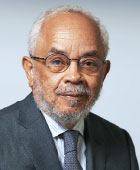In an earlier column, I noted that the COVID-19 pandemic has stimulated my reflecting on articles published some time ago. Here I discuss a piece sent by a friend who has a deep interest in solving problems evoked by oppression and discrimination. The article, “Surviving Hating and Being Hated: Some Personal Thoughts About Racism From a Psychoanalytic Perspective,” was written by the psychoanalyst Kathleen Pogue White and published in Contemporary Psychoanalysis.
Dr. White invites the reader to ponder “racial hatred.” She does not define it crisply. However, the clinical vignettes she provides evoke intense animosity or hostility. She calls hatred a common human experience, one that we fear and forces us into a collusion of silence. It is understood that, while her focus is on the racial context, people experience hatred and hating on other bases like gender, religion, language, and disability. She exhorts us to tear the veil off this taboo, get it out in the open. Let fresh air into the space. Our clinical work might improve. I suggest that so may our social interactions and political discourse.
She sees three ways of thinking about racial hatred: being hated, hating the self, and hating the other. She emphasizes that her model derives from her experiences. For the first concept, she tells us about her kindergarten interaction with a nun. The nun asked whether anyone could read. Young Kathleen put her hand up to announce her achievement in reading. The nun replied that her pupil was not telling the truth. Dr. White goes through some psychoanalytic commentary before concluding that the nun had “spewed venom on a little person. …” The hatred continued as the teacher persisted in calling her “a rotten apple” throughout grade school. The analyst-author explains that there is a strategy for surviving this hatred: recognizing the projection from the nun, getting angry, and turning it back. So much for the problem of being hated.
White employs similar brief stories in talking about hating the self, which she defines as the internalization of “pernicious, destructive attributions and projections.” Her explication of these processes is important. She wants to assure us that the psychoanalytic method may offer a pathway to healing. I reminded myself that there must be a role for positive experiences coming from others around us: at home, work, and leisure, for example.
White’s third way of thinking about hatred has to do with hating the other: “re-externalizing malignant projections and regarding the projective source with extreme hostility.” This response is variable, as we all know. It may take the form of a quiet rebuke, a serene sit-in, a rambunctious march, or a frightening manifestation of plundering and violence. She calmly wonders what internal pressures on whites colonizing America may have caused them to hate Blacks and other groups, with resulting revulsion and outright murder. She suggests the mayhem of those early colonizing years may have been produced by the toxicity involved in the colonizers’ expulsion from their original countries. She invites white people to mull this problem over, as she lays bare her own pronounced hatred toward whites.
Kathleen White leaves the meaty challenges for last. She notes, “For blacks to come out of collusive racial self-hatred, we have to take back the good projections (white is good) and tolerate the experience of our own self-hatred (black is bad). For whites to break the collusion of racial hating, they have to take back the bad projections (black is bad) and tolerate the experience of whatever self-hatred they experience as a result.” These recommendations are complicated by our traditions and habits, White points out. We are accustomed to reflecting on what it means to be Black. Now, how about considering the experience of being white?
Other scholars have been recognizing this new turn in our field, leading to a renewed exploration of “white privilege.” My late colleague Professor Frederick Hickling had for some years been using the term “European-American psychosis.” He raised questions about the birth of this delusional idea that whites are inherently superior to everybody else. In her Fanon-esque psychoanalytic model, White points out that both the oppressor and oppressed are caught up in a collusion related to racial hatred. Unraveling it requires a joint agreement to self-examine. It is a tough assignment, as we are inclined to attack the blameworthy other. White wants more than that, although she concedes she may not see it in her lifetime. She urges us to end the bilateral self-hating legacy of racism. The crucial first step is for us to talk about it. ■
“Surviving Hating and Being Hated: Some Personal Thoughts About Racism From a Psychoanalytic Perspective” is posted
here.

